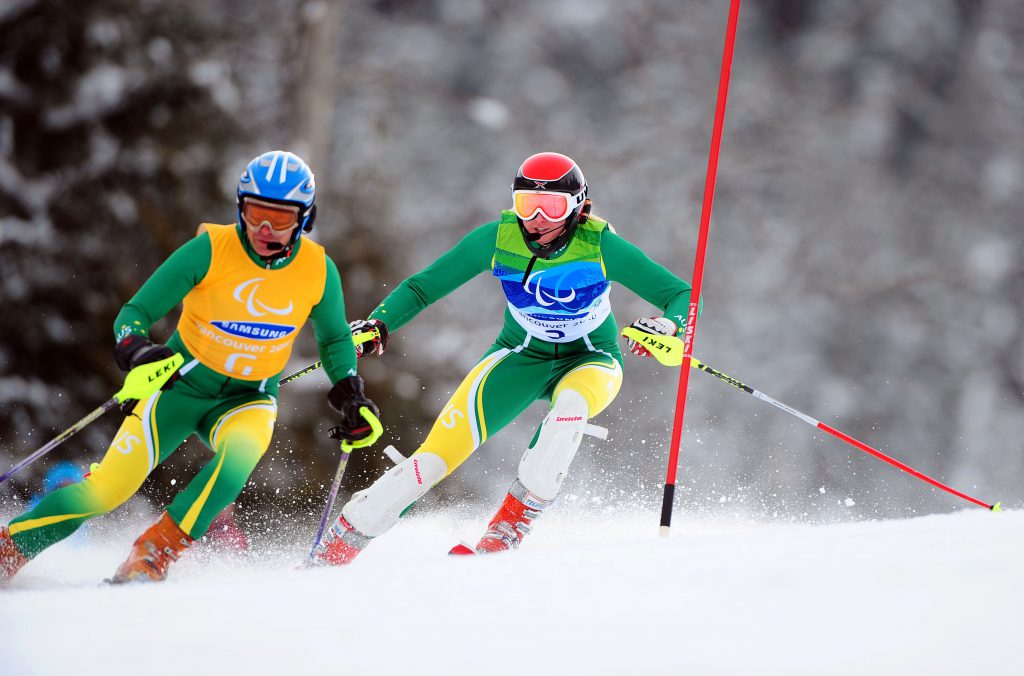One of the most common questions I am asked is how do I ski given I am legally blind? Well it’s not easy but with adaptive technology I am able to get down a mountain just like anyone else.
As a vision impaired person in ski racing my adaptive technology is actually a person. When flying down a race course I have the aid of a ski guide who skies 7-10 metres in front of me. Eric my ski guide wears a fluro vest so he acts a visual guide but we also wear headsets inside our helmets so that we can communicate to one another as we are skiing down the slopes.

Essentially Eric acts as my eye sight. He relays information to me on the things that I can not see when I am skiing. One of the difficulties of being a vision impaired person when racing a ski course is that we are affected by the ever changing elements that are the mountains and Mother Nature.
When I compete in track and field (Long Jump and Javelin) I can go anywhere in the world and know that the Long Jump and Javelin runways will be exactly the same, my run up length is always the same and the only potential changes may be wind or rain. This is why in track and field I am able to compete without the aid of a guide. Ski racing however is a completely different ball game. Whilst the track and field environment is stable in ski racing we race on different runs every day and this is why Eric plays such a crucial role.
The ski guide and vision impaired athlete relationship is all about trust because I need to ensure that when I’m trying to get through the race course at high speeds I can also do it safely. Eric relays information like pitch changes, gate combination changes, snow condition changes (ie. soft to icy snow), visual changes (snow storms will dramatically change how much you can see when skiing), light changes (going from shade into sunlight and vice versa), spotting landings off any speed sections where we may get air (as I can’t seethe ground when I ski), strategic calls in particularly difficult technical aspects of race courses along with encouragement and even the cheeky yell telling me to go faster! Of course when not in race mode Eric does like to sing into the headsets, for some bizarre reason he thinks he has a good voice… and is very good at annoying me with it. Luckily for me there is an off button!
As you can see (no pun intended) there is a lot of information that needs to be received and processed in a very short space of time whilst trying to race and if you think I have it hard trying to take all that in spare a thought for Eric who has to stay in front of me, ski the course, not hit any gates because I need to hit them (if he hits them then they will whack into me!), pick up all the visual changes throughout the course and then give the information to me in a split second because when Paralympic medals are determined by hundreds of a second you can’t afford to make mistakes.
So yes ski racing as a vision impaired person is hard but with the help of my trusty guide Eric we can conquer any race course and hopefully bring home medals for Australia at the same time!

